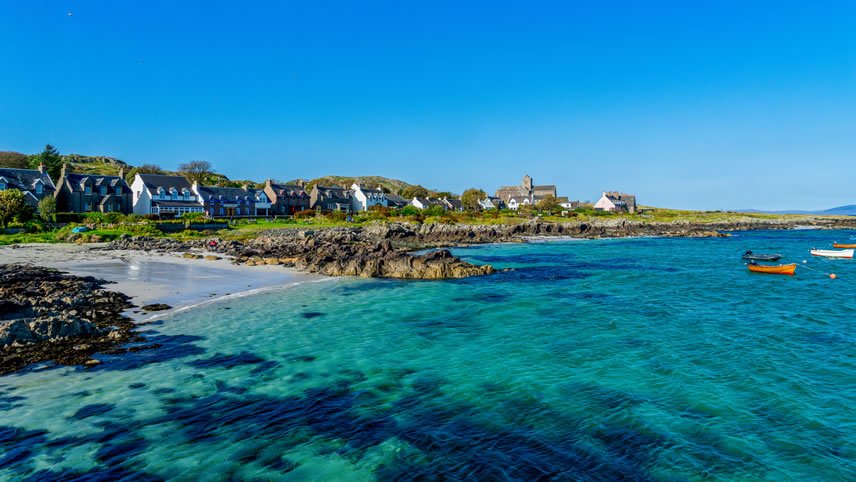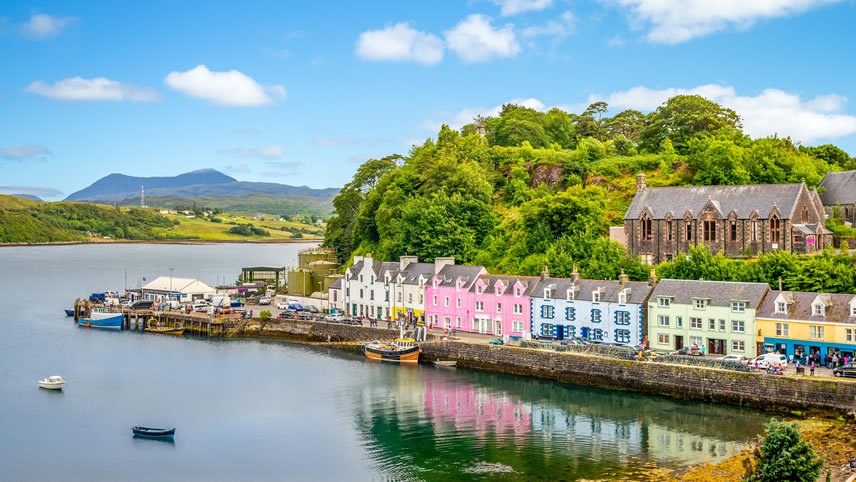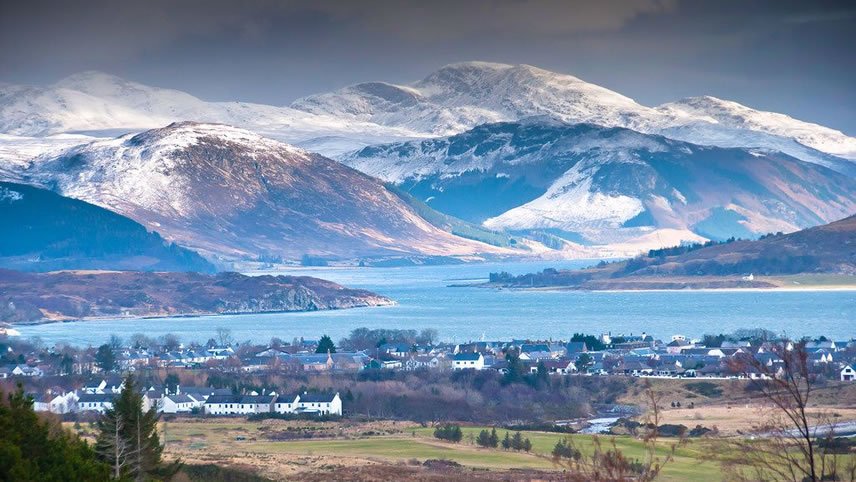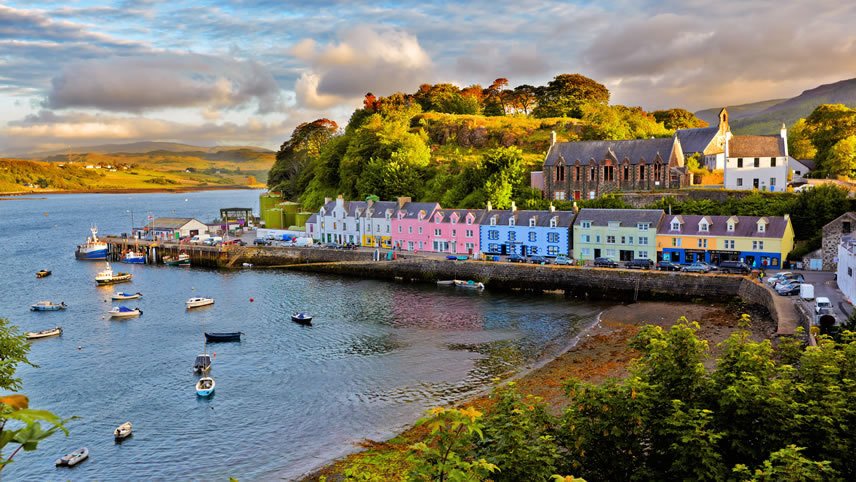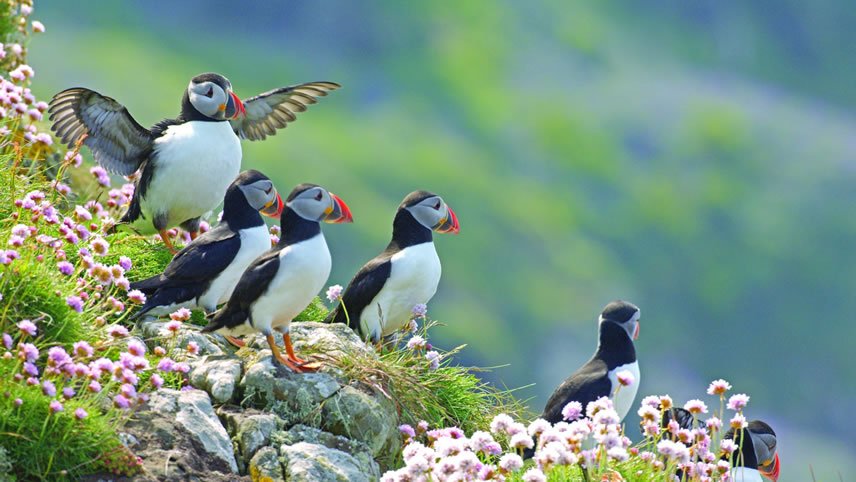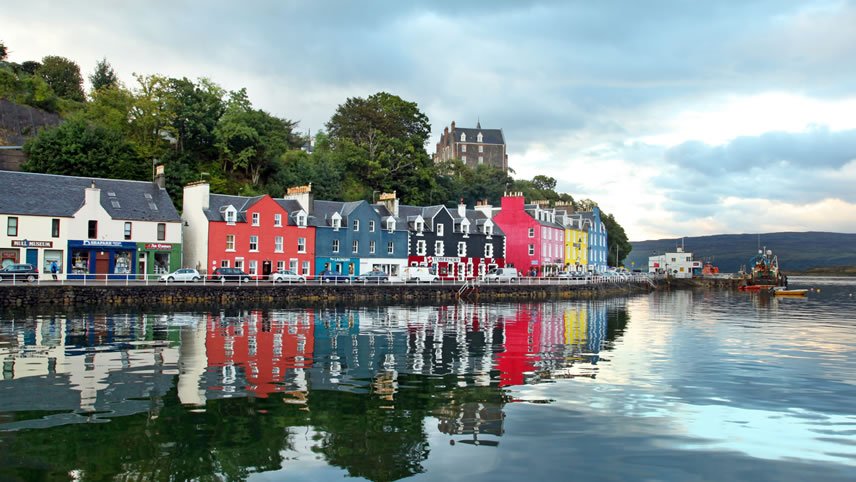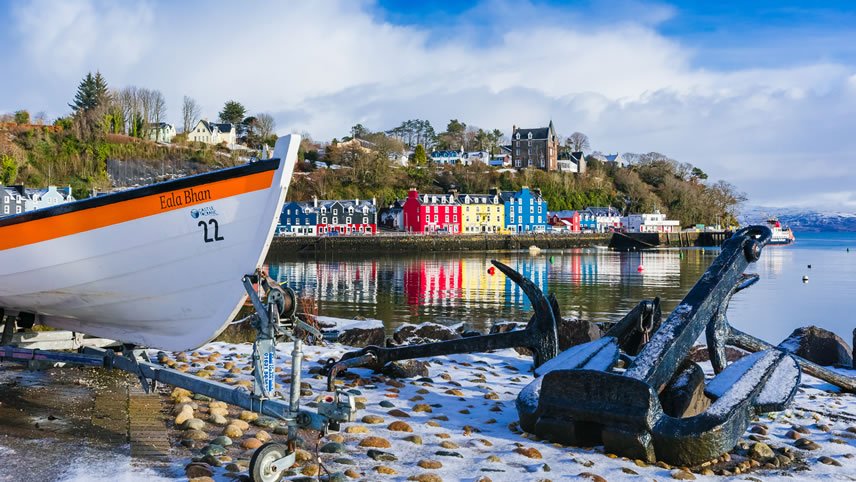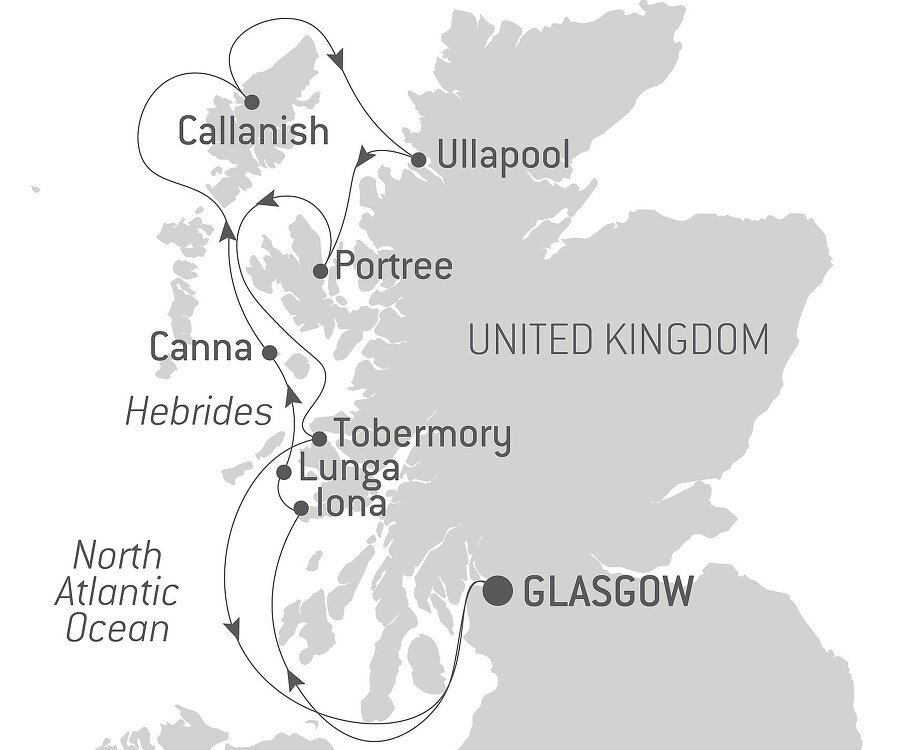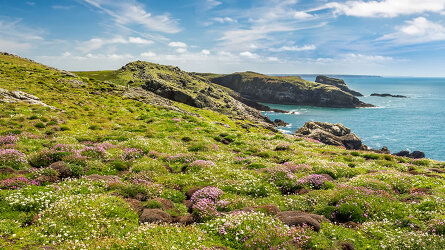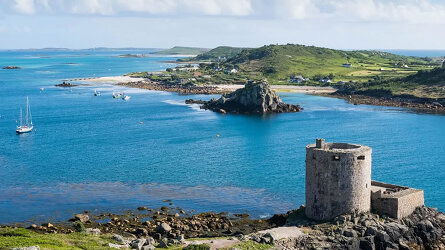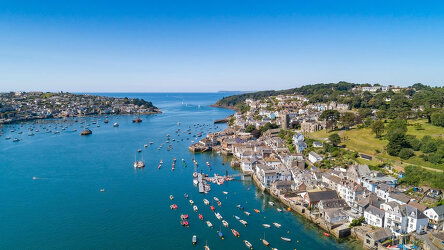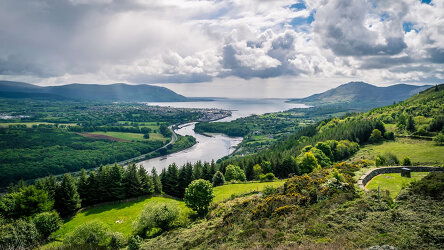Overview
Located to the west of Scotland, it has around 150 islands and will reveal its diversity to you over various all-new ports of call. You will make a stop on Iona, the birthplace of Christianity...read more in Scotland, home to an impressive abbey, and probably where the Book of Kells was produced. Then, you will reach the volcanic territory of Lunga, in the Treshnish Isles. The small island is a protected area for seabirds and home to colonies of puffins and guillemots among others.
Canna, a charming islet inhabited by twenty or so souls and nicknamed "the garden of the Hebrides", will unveil itself, with its Christian, Celtic, Nordic and Scottish vestiges, in a natural setting of great beauty, a sanctuary for rich marine birdlife. You will continue to the Outer Hebrides and you will discover Callanish on the Isle of Lewis. This all-new port of call will take you back in time to between 2900 and 2600 BC, the period during which the island's megalithic site would have been created... Before the circle of standing stones, aligned with the cardinal points, the mystery remains entire, the emotion is palpable.
Your ship will then cruise towards Ullapool on the shore of Loch Broom in the western Highlands. This former herring fishing port boasts a picturesque atmosphere made up of white cottages and colourful fishermen's boats. You will call at Portree, the largest town on the Isle of Skye, located on the edge of a loch that extends inland. The last stage of your journey will take you to Tobermory, a charming fishing port with multicoloured houses and with a distillery that produces a renowned single malt, before you arrive in Glasgow, your disembarkation port.
Cruise Itinerary
Glasgow was Scotland's great industrial centre during the 19th century and today, the city remains the commercial and cultural capital of the Lowlands. Lying on the banks of the River Clyde, Glasgow boasts some of the finest Victorian architecture in the entire United Kingdom. Ships will dock in Greenock which is a 45 minute drive from Glasgow.
Top Things to Do in Glasgow:
- admire the famed Glasgow Cathedral
- stroll through the Glasgow Botanic Garden
- cruise Loch Lomond
- visit the Kelvingrove Art Gallery and Museum
Known as the 'cradle of Christianity', Iona has an atmosphere of peace and tranquillity, enhanced by green fields and sandy beaches fringed with intense blue-green seas that look more Mediterranean than Scottish.
The island's main attraction is its medieval abbey, established by Saint Columba when he arrived from Ireland in 563. The abbey is a fine example of ecclesiastical architecture dating from the Middle Ages and it also serves as an important site of spiritual pilgrimage. Many kings of Scotland, including the legendary Macbeth, are buried in the nearby cemetery.
The stunning Isle of Lunga is the largest island in the Treshnish archipelago. With volcanic origin the isle was populated until the 19th Century, and the remains of black houses can be seen around this magnificent coastal jewel.
Abundant plant life and exotic birdlife are now the main inhabitants of the area. Fortunate visitors can view the magnificent array of birds, especially the great puffins, and look for rare and endangered plants such as, primroses and orchids. For spectacular views of the surrounding landscape and ocean, visitors can make their way up the 300 foot high cliffs.
The Isle of Canna, the westernmost of the Small Isles in Scotland, is a serene and compact haven known for its rich history and natural beauty. Owned by the National Trust for Scotland, this peaceful island offers an array of archaeological sites, from ancient Celtic crosses to the remnants of Viking settlements.
Birdwatchers are particularly drawn to Canna for its significant populations of seabirds.
With just a few hours to explore, visitors can easily traverse the island’s gentle hills and enjoy panoramic views of the surrounding seas. The tranquil beaches and clear waters also invite leisurely strolls and picnics, making Canna a delightful retreat from the hustle of modern life.
Callanish, located on the Isle of Lewis in Scotland's Outer Hebrides, is famed for its ancient stone circle, Callanish Stones. These prehistoric standing stones, dating back over 5,000 years, are steeped in mystery and provide a captivating glimpse into the island’s Neolithic past. The site offers breathtaking views, especially at sunrise and sunset, creating a magical atmosphere.
The nearby Callanish Visitor Centre provides insights into the history and significance of the stones. The Isle of Lewis also features stunning landscapes, including rugged coastlines and sandy beaches, and rich cultural heritage seen in its traditional Gaelic communities. Callanish is a must-visit for history buffs and nature enthusiasts alike.
The picturesque fishing town of Ullapool nestles on the shores of Loch Broom, in the Scottish Highlands. Its location is one of the more pristine natural environments in Britain. Ullapool offers a row of whitewashed cottages arrayed along the harbour and special views of the loch and its flanking hills. Ships will anchor offshore and tenders will be provided to the dock.
Top Things to Do in Ullapool:
- hike the beautiful trails of Knockan Crag
- drive through Scotland’s western Highlands
- visit majestic Corrieshalloch Gorge
- skim the waters of Loch Broom on a RIB
Your exploration of the Isle of Skye should start off with a visit to the Old Man of Storr, an iconic rock formation offering stunning views of the surrounding landscape. The Fairy Pools are a series of crystal-clear blue and green pools and waterfalls, the perfect location for a leisurely hike. For a taste of local culture, visit the Dunvegan Castle, the oldest continuously inhabited castle in Scotland, where you can learn about the Clan MacLeod.
Portree, the picturesque capital of the Isle of Skye, enchants visitors with its colorful harbour and stunning natural beauty. The town's name is derived from the Gaelic "Port Righ" (King's Harbour), and hints at its royal connections, including a visit by King James V in 1540. Lined with brightly painted buildings the quaint harbour provides a perfect backdrop for leisurely strolls.
Portree offers several notable attractions including the Aros Centre which showcases the island's culture and history through exhibitions and performances. For nature enthusiasts, the nearby Old Man of Storr offers breathtaking views and a rewarding hike. Don't miss a visit to the local shops and eateries, where you can sample traditional Scottish fare and purchase unique island crafts.
The Isle of Mull, situated off Scotland's west coast, is renowned for its picturesque landscapes and charming villages. Nature lovers will be captivated by the island's diverse wildlife, including eagles, otters, and whales. Explore the island’s rich history by viewing Duart Castle, the ancestral home of Clan Maclean, perched dramatically on a cliff overlooking the Sound of Mull.
Located at the northernmost tip of the lovely Isle of Mull, Tobermory has to be one of the most beautiful natural seaports on Scotland’s West Coast. Founded in 1788, this ancient fishing village has been converted to a leisure port highly appreciated today for its surroundings and the quiet charm it exudes.
Visitors will be won over by the row of many-storied houses on the hillside, illuminating the harbour with their vibrant colours. The town offers a museum dedicated to the local history, an art gallery, a 9-hole golf course and a whiskey distillery.
Glasgow was Scotland's great industrial centre during the 19th century and today, the city remains the commercial and cultural capital of the Lowlands. Lying on the banks of the River Clyde, Glasgow boasts some of the finest Victorian architecture in the entire United Kingdom. Ships will dock in Greenock which is a 45 minute drive from Glasgow.
Top Things to Do in Glasgow:
- admire the famed Glasgow Cathedral
- stroll through the Glasgow Botanic Garden
- cruise Loch Lomond
- visit the Kelvingrove Art Gallery and Museum
Life Onboard Le Boreal
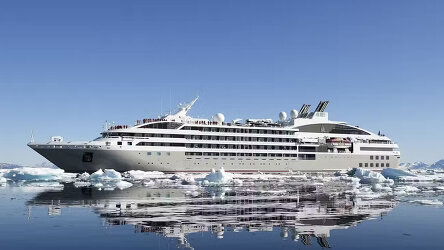
Take a voyage on Le Boreal and enjoy the sophisticated luxury of small ship cruising. Read more

Choose from nine categories of staterooms and suites, all of which offer ocean views. Read more

Whether you choose to dine in the restaurant or at the grill you will savour Ponant's French gastronomy. Read more
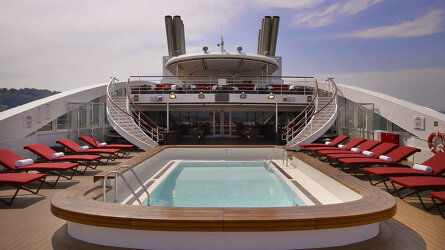
Relax on the pool deck, take in the views from the lounges or rejuvenate in the onboard spa. Read more

From the moment you embark your every need will be looked after by the French crew. Read more

Relax and unwind at the spa in a deep aromatherapy bath filled with reviving mineral salts. Read more

Le Boreal Reviews (1) Most Recent 'Le Boreal' Reviews
Brochure

Ponant Luxury Voyages (2025)
Availability Click on prices below to view cabin upgrades and details
Tour & cruises prices are per person. Prices shown have savings applied, are subject to availability and may be withdrawn at any time without notice. Pricing and trip details are correct at this point in time, however are subject to confirmation at the time of booking and are subject to change by Ponant. For cruise itineraries, cabin images are sourced from Ponant. These should be treated as indicative only. Cabin inclusions, upholsteries and room layout may differ to the image(s) shown depending on the ship selected and your sailing dates.
